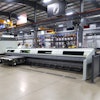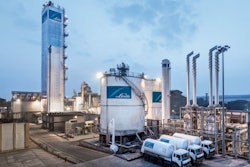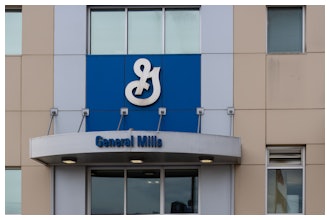Last year ended with some bad news: U.S. average hourly earnings shrank in December. The lack of competitive wages in the manufacturing industry contributes to the skills gap, or the shortage of qualified workers applying to available jobs.
I had the opportunity to sit down with Advanced Technology Services President Jeff Owens and discuss his take on the shortage of skilled manufacturing labor, and his predictions for the upcoming year.
Bridget Bergin (BB): What are some of the major factors contributing to the skilled labor shortage and decrease in hourly wages?
Jeff Owens (JO): First and foremost, the retiring baby boomer generation has a huge impact on the skilled labor shortage. With the youngest of this generation approaching their mid-fifties and older boomers retiring at an average of 10,000 per day according to the Washington Post, American manufacturing is facing serious challenges. The fact that the retiring workforces acquired their skills through high school industrial arts and company-sponsored apprentice programs that are not available to today’s youth only exacerbates the problem.
Perception drives many myths about manufacturing—the largest one being that manufacturing jobs are not as professional or high paying as jobs that require a suit and tie. Nothing could be further from the truth. Fact is, manufacturing salaries outpace retail jobs by a mile.
BB: Which industries and positions are seeing the biggest shortages?
JO: We see shortages across the board; it is a key driver for our business. Because many of our customers struggle with recruiting and retaining the maintenance talent needed to meet the demands of their manufacturing strategies, they turn to ATS to provide a wide array of production maintenance needs. Home building products are booming, aerospace is on the rebound, and automotive suppliers are stretched. Although we are seeing shortages in these market segments, generally speaking the jobs that require the highest level of skills and training are experiencing the biggest shortages. Tool and die experts and maintenance technicians with CNC and PLC experience lead the list of positions hardest to find or replace.
BB: What can manufacturers do to help attract and retain talented workers?
JO: Like any serious profession, career advancement is a major driver when it comes to attracting and retaining talented workers. My company believes that challenging employees to develop their skills is key to their advancement and personal satisfaction—that’s why we have invested in developing an internal training program called SkillPoint™ Technical Training. It provides professional maintenance training from basic electrical to advanced CNC and PLC training. The training is also highly mobile. Skills training not only serves to attract top talent, but also it provides a very strong retention factor as well.
BB: What are some bright spots or solutions?
JO: Because manufacturing has and continues to be a bright spot in our economic recovery, there is growing awareness of the skills shortage, which will help introduce more young people into the high paying jobs that manufacturing offers. From our perspective as a professional maintenance company, we are able to attract highly skilled technicians because of the career paths and training we offer. So, even with the shortage, we are growing significantly employees and customers.
BB: What are your predictions for the skilled manufacturing labor shortage in 2015?
As student debt continues to rise from attending traditional four-year degree colleges, young people will look to more affordable, job-specific training offered in community colleges. This trend, in conjunction with state and federal funding, will begin to fill some of the skills shortage existing in today’s workforce. But the process will not produce enough to keep up with the shortage fueled by the retiring baby boomers. That’s why I predict that we will see a resurgence of apprentice programs and job-specific training offered to employees.
ENTRIES OPEN: Establish your company as a technology leader. For 50 years, the R&D 100 Awards, widely recognized as the “Oscars of Invention,” have showcased products of technological significance. Learn more.























